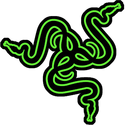
ASE's State-of-the-Art Semiconductor Assembly System Bolstered by AMD Processors
Often, when semiconductor companies talk about chip manufacturing, they are referring to the specific process of applying masks and etching silicon wafers that takes place in advanced foundries. While these are critical steps in chip production, they don't result in a functional processor in and of themselves. Fully processed wafers are often transferred from the foundry manufacturer to an OSAT (Outsourced Semiconductor Assembly and Test) firm. There, newly built processors are mounted to underlying substrates, connected to other processors, and checked for errors.
ASE Technology Holdings is the largest OSAT in the world, with facilities in Taiwan, China, Japan, Korea, Malaysia, and Singapore. It assembles and tests electronics for semiconductor manufacturers across the planet and has collaborated with AMD to develop 2.5D interposers and other advanced packaging since 2007. But it's one thing to build parts for a customer and something altogether different to adopt that customer's hardware into your own lines of business. ASE's collective requirements run the gamut from lightweight mobile systems to data center systems with dozens to hundreds of available CPU cores.
ASE Technology Holdings is the largest OSAT in the world, with facilities in Taiwan, China, Japan, Korea, Malaysia, and Singapore. It assembles and tests electronics for semiconductor manufacturers across the planet and has collaborated with AMD to develop 2.5D interposers and other advanced packaging since 2007. But it's one thing to build parts for a customer and something altogether different to adopt that customer's hardware into your own lines of business. ASE's collective requirements run the gamut from lightweight mobile systems to data center systems with dozens to hundreds of available CPU cores.














































































